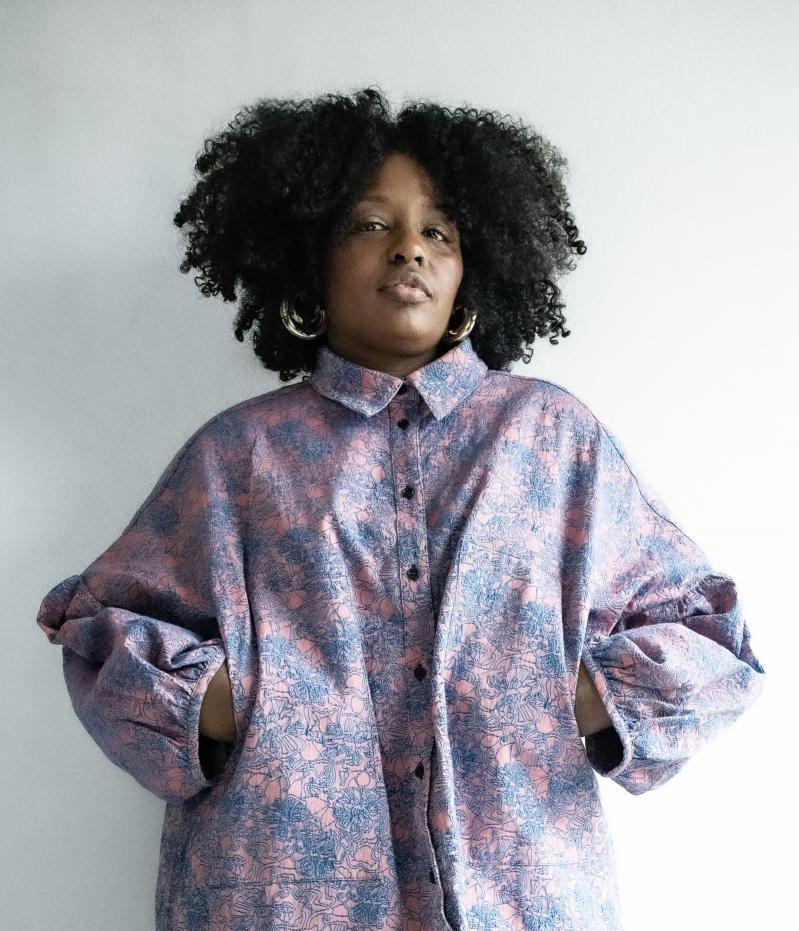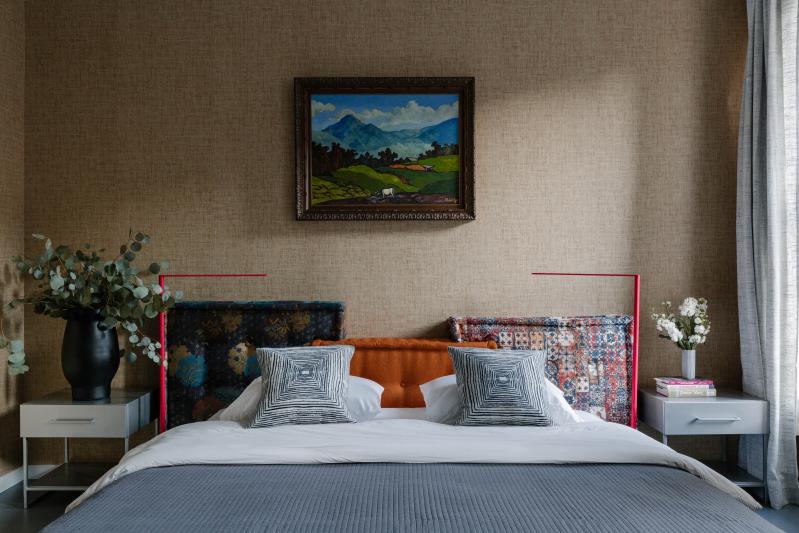It takes understated talent and a keen eye for a designer to balance her personal aesthetic with those of a client. "I consider it high praise when a client's family or friends walk into the space and say it's a reflection of the client and doesn't feel designed," said Delia Kenza, an interior designer based in Sag Harbor and Brooklyn.
How does she do it? She takes a layered approach, enabling the personality and performance of a space to echo the people who will live in it. "I'm not a thematic designer," she said, but there is a through line to her aesthetic. "It's warm, modern, and minimal," she said. "I'm not afraid of deeper tones or darker, moodier rooms if it feels right."
Conversation is a critical part of Ms. Kenza's design process. "I try to make myself approachable, so clients open up." She wants to create trust, to understand what clients like visually but also what they need in a space. She doesn't want clients to gravitate toward trends that may not reflect their taste or needs, and that may be a fleeting fad. There's "a lot of talking and a lot of listening," she said with a warm laugh.

Ms. Kenza considers her client's lifestyle and aesthetic, and builds on it. A keystone of her work is an object that tells a story or holds a memory for her client. It may be an heirloom that reflects their cultural history, or a piece collected during travels. "It's meaningful to impart the sense of place into a design, but I see beyond the beach in Sag Harbor and am inspired by its cultural dimensions as well." There are layers of history and culture here, in addition to the inspiring bays.
Art and artistry also weave through her designs. Ms. Kenza considers art "the icing, it's the jewelry, it's a source of inspiration." She also appreciates the history of materials she uses and once visited one of the oldest tile factories in Portugal where tiles are still made by hand, using the same method as the Moors.
As Ms. Kenza describes her work, it becomes clear that she embarks on projects through a multisensory lens: The feel of the space and the quality of the light shape the visual direction of a project. The lines of the furniture she selects are clean and the components convey a serene quality. Deeper neutral tones play against a more vibrant accent color. There's an energizing effect that embodies a line from Heraclitus's "Fragments," "The balance of opposites creates harmony."
That said, Ms. Kenza doesn't shy away from bold ideas. When she redecorated Jenna Bush Hager's office, they joked that "leopard is a neutral." Lately, she's been drawn to the way that metallics and reflective surfaces enliven a space, mimicking the meditative luster of candlelight.
In practical terms, design must keep a budget in mind. Ms. Kenza feels it's worth spending on focal elements that have greater impact. "Splurge on tile in a smaller space, where it can set a mood. A sofa can last for years and be reupholstered. Get the best quality that you can afford so that it lasts. Splurging on a light fixture can create atmosphere," she said. And to balance the budget, she noted, "Save on pillows. There are many beautiful ones that are reasonably priced. Wallpaper can set the tone in a dining room but maybe go vintage for the table as there are great ones available for reasonable prices."
With environmental considerations, she considers the lasting power of design elements. "Fast fashion for the home is wasteful," Ms. Kenza said. She encourages her clients to avoid short-lived trends and asks them, "Do you truly love it?" Good design takes time to create and requires patience and there should be an appreciation of lasting quality. She favors natural fabrics that are grown in a conscious way to have a less damaging environmental footprint.
How does she know when a project is finished? "You feel it when you're done. You've come up with a plan and it's been executed. You've gotten over all the hurdles, the artwork has been hung, and the space feels complete. I like to leave a little room for clients to grow into their spaces." A project is complete, but there's still opportunity for it to evolve. "We change as people. We bring things home when we travel. Kids may bring home artwork. There should be room for that."

